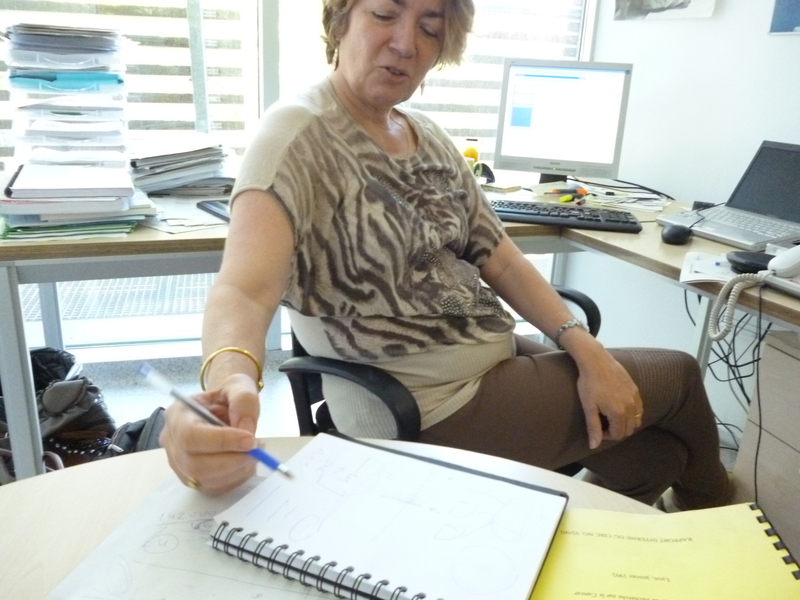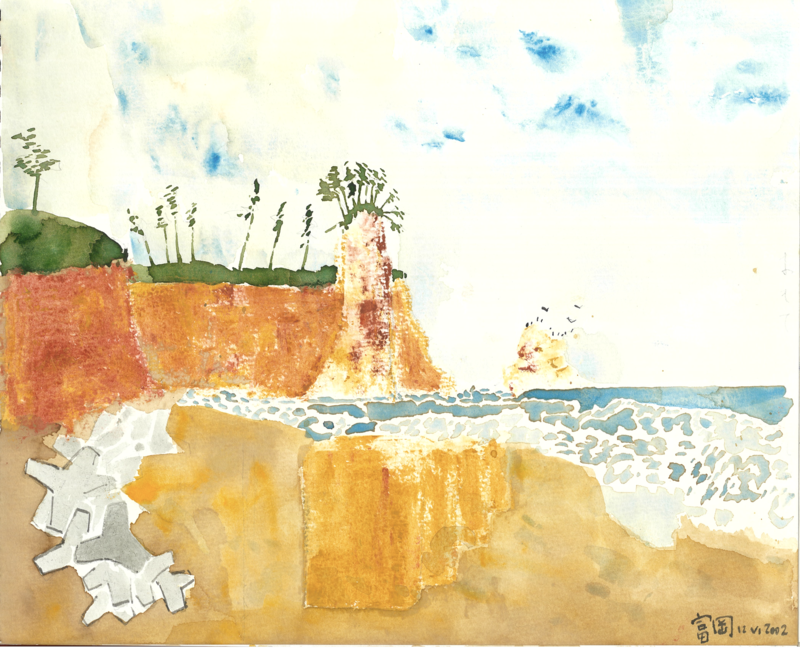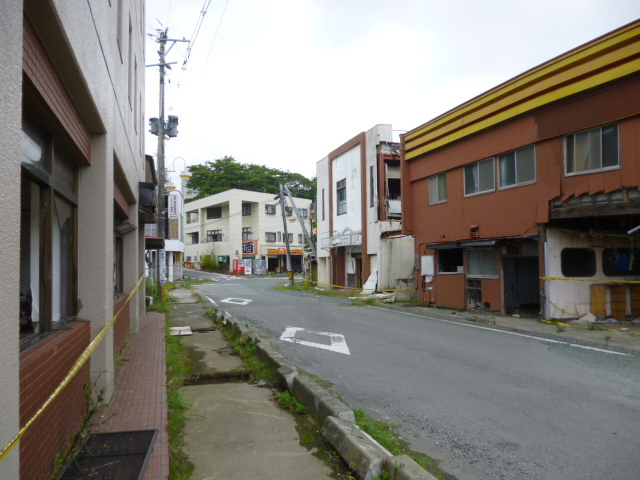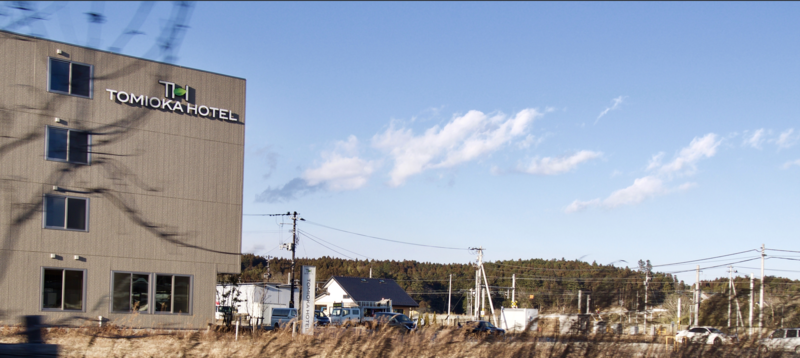Abstract: The first tsunami that hit northern Japan in March 2011 was a big wave of salt water. The second tsunami was comprised of cement dikes designed to protect against a tsunami. The third tsunami is a socio-political process that erases memory of the disaster. The nuclear disaster that followed the first tsunami has reactivated the dispute over the effects of low-dose radiation. This controversy, which dates back to the experience of the hibakusha in 1945, includes a problem of hermeneutics—a conflict of interpretation—over what is being counted as “data”.
Keywords: Fukushima, disaster, nuclear energy, tsunami, radiation, nuclear safety.
The Fukushima nuclear disaster has reactivated the controversy over the hazardous consequences for human health of radiation at low doses, an issue dating back to the mid-1950s and the foundation of the Hiroshima-Nagasaki epistemic paradigm. My essay for Fukushima Legacies1 follows up on research started in 2002 on Japanese nuclear workers, mostly contract workers at the Fukushima Daini Nuclear Power Plant.2 Further observations and interviews have been carried out since 3.11 in Japan and Europe among cleanup workers, government experts, activists and epidemiologists.
For nuclear workers, radiation is a physical experience, a constant risk, and it is a lottery: some workers are more exposed than others, but in the end, no one knows who will hit ‘the jackpot’ of leukemia or other severe sickness. As I show, this experience is being interpreted very differently, depending on what is counted as “data”, and how these data are interpreted; in other words, it is a problem of hermeneutics. If the word usually evokes sophisticated debates between philologists and other specialists of sacred texts such as the Bible or the Talmud, it may also apply to the no-less sophisticated conflicts of interpretation over radiation and its consequences for the environment and human health.
Nuclear Workers and the Hermeneutics of Radiation
The first part of the chapter addresses the chronic dimension of nuclear risk, or the disaster before the disaster. As a result of the multiple levels of subcontractors and the frequent camouflage of radiation doses, the nuclear industry in Japan and other countries has made invisible major elements of occupational hazards. This invisibility of local and chronic hazards has also undermined the global production of scientific knowledge on the effects of low-dose radiation.
For instance, during my 2002 fieldwork in Tomioka Town (near Fukushima Daini), I learned of a welder who died of leukemia at age forty-six, after working ten years for a TEPCO subcontractor. According to the official records on his “radiation notebook” (hibaku techō), the total dose of his exposure to radiation was 75 mSV. This was more than enough to apply for compensation beyond the public system of occupational hazards.3 But TEPCO offered a solatium – or mimaikin, i.e., money given as a consolation with no legal implication—which convinced his family not to apply.
Instrumental during my research in Tomioka was Ishimaru Koshirō, a local post office employee and antinuclear activist.4 Mr. Ishimaru encouraged me to visit the local bureau of the Labor Standards and Inspection Office (Rōdōkijun Kandokusho), which was then located in Tomioka, and was later transferred to Iwaki after 3.11. An employee showed me records of contract workers who had developed serious illnesses, but who could not apply for compensation since the official records of their accumulated dose of radiation remained below the protection standards.
However, the interviews I conducted with workers suggested that these records might not be entirely reliable. Most of those were “gypsy workers”5 whom I met in a cheap hotel called “The Happy Guesthouse”. The owner was a very kind woman in her forties, the food was great, and the football World Cup on TV provided a good pretext to start a conversation. These men were confident about working in the nuclear installations as few of them had heard of Chernobyl, and for those who had, it was seen as the result of a technologically backward country. And except for a few antinuclear activists such as Ishimaru, 3.11 was a scenario beyond imagination. But their own exposure to radiation was a more sensitive topic.
Another striking testimony was provided by a man named Yokota, the local head of a small firm hiring subcontract workers for Japan’s reactor manufacturers such as General Electric and Hitachi. When I met him with Ishimaru, he had severe diabetes, and was out of work because TEPCO had refused to provide any help. He explained to us in detail how he had himself been complicit in systematic falsification of health records, using a fake “no abnormality detected” stamp (see Figure 1). For years, he loyally served this organization by hiding or minimizing the financial and medical costs of working under radiation. But eventually, TEPCO discarded him like a used tissue.
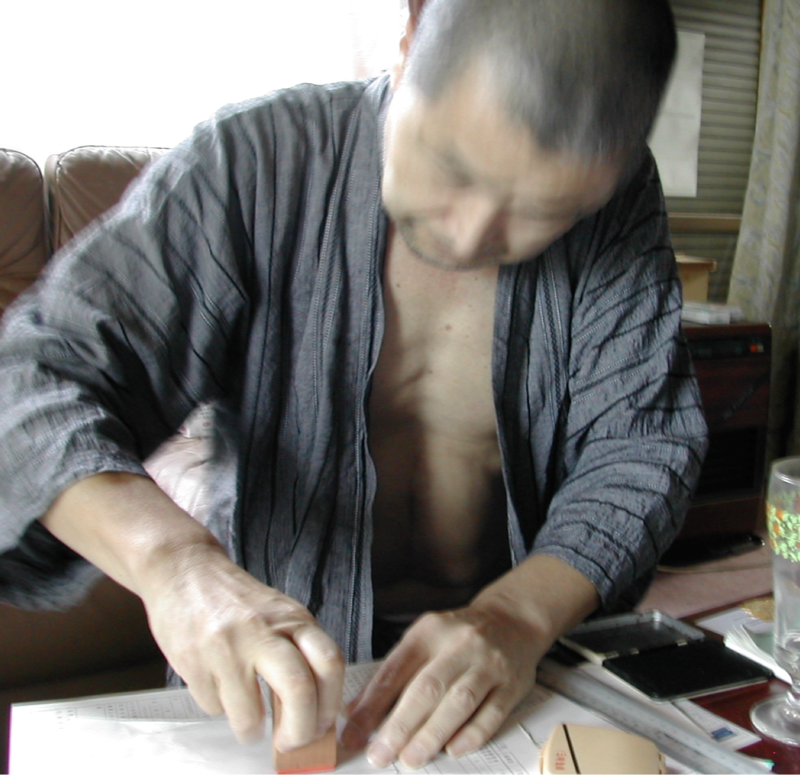
Fig 1: Mr. Yokota’s different company badges to work at TEPCO.
Tomioka, August 2002. (Photo: Paul Jobin)
These micro-stories of what Robert Jay Lifton characterizes as “invisible contamination” flew under the radar of the labor inspection and mass media.6 But with the help of groups such as the Citizens’ Nuclear Information Center (Genshiryoku Jōhōshitsu or CNIC, founded in 1975) and the Japan Occupational Safety and Health Resource Center (Zenkoku Rōdō Anzen Eisei Sentā Renraku Kaigi or JOSHRC), some workers struggled hard against the electricity companies and the Ministry of Health and Labor, partly through lawsuits, to have their illness recognized as resulting from their work in nuclear plants.
This legacy of worker struggle has been of crucial importance for what occurred after 3.11. Japanese antinuclear and labor activists have further developed criticism of existing safety standards building on their long struggle for the recognition of occupational hazards and elaborating on their understanding of classical epidemiology.
The second part of this chapter addresses the criticism that has risen within the nuclear establishment in Japan and among the international community of epidemiologists and radiation specialists. The epistemic conflicts of interpretation between Japanese government experts and activists on low-dose radiation thus is part of a larger debate, at a global level, within the community of epidemiologists and radiation specialists.
In his resignation letter of April 2011 from the crisis committee to the Prime Minister, Kosako Toshisō insisted that the government’s safety standard of cumulative annual contamination of 20 mSv was set too high, even for workers in nuclear plants or uranium mines and that children should certainly not be exposed to such a threshold level. When I met him one year later, he expressed no regret over his declaration (see Fig.2).7 His inclusion of nuclear plant workers bears a deep meaning regarding the evolution of the controversy over the safety of low doses of radiation after 3.11. Indeed, given the invisibility of the real impact of nuclear radiation as explained above, between 2003 and 2009, for the total workforce employed in all the nuclear power plants of the Japan archipelago, officially only 21 individuals were recorded as having been exposed to a cumulative annual dose of 20 mSv or more. This figure has quickly risen after 3.11: in July 2012, 4,398 people were recorded as having been exposed.8
Fig. 2: Nuclear expert Kosako Toshisō. Tokyo, June 2012.
(Photo: Paul Jobin).
However, other nuclear experts advising the government, such as Yamashita Shun’ichi and Nagataki Shigenobu, systematically minimized radiation risk. For the late Nagataki—whom I could meet twice before his death in 2016—there was no reason to doubt the scientific results from the United Nations Scientific Committee on the Effects of Atomic Radiation. These scientific results, which have been established from the cohort studies of Hiroshima and Nagasaki, claimed that a cumulative dose below 100 mSv per year had no consequence, and that above that level, the risk of cancer increases steadily but moderately: at 100 mSv, cancer would affect 1% of the population, 2% at 200 mSv, 5% at 500 mSv, etc. These became the epidemiological basis for enforcement of radiation protection.
Moreover, in 2007, the International Commission on Radiation Protection (ICRP) recommended a maximum exposure of 100 mSv over five years, or 20 mSv per year, in regular time. Nagataki considered these norms as precautionary measures and social compromises, not appropriate epidemiological guidelines. And he was totally right on this point, for the basic philosophy of ICRP has always been to set the standard “As Low as Reasonably Achievable” (ALARA), implying flexible adjustments depending on the situation; in case of emergency, radioprotection standards could thus be raised to 500 or 1000 mSv or even no limit if necessary to save lives and if the rescuers are informed of the risk. Indeed, in the case of Fukushima, one of the first decisions taken by the Ministry of Health, Labour and Welfare, on 14 March 2011, was to raise the annual exposure limits for nuclear workers from 20 to 250 mSv per year.
As an officer from the French National Institute for Radiation Protection and Nuclear Safety (IRSN) who advised the French Ambassador in Japan in March 2011, explained to me: “When there is a need to save the reactors, […] if it is necessary to overexpose some people to keep filling water into the pools, that’s fine, because otherwise, you know, it’s something that we don’t want to see!”9
What I found more surprising was that Nagataki also disputed the scientific validity of the epidemiological surveys on nuclear plants workers, which had been conducted over the years in fifteen countries (including Japan), under the coordination of the World Health Organization’s International Agency for Research on Cancer (IARC) under the direction of Elizabeth Cardis. Although Nagataki acknowledged the solid scientific background of Cardis, he underlined what he considered a methodological bias and a breach of ethics, which according to him had been denounced by the Canadian team. Such harsh criticism within the nuclear establishment was puzzling.
Cardis agreed to an interview to discuss these questions (see Fig. 3). Firstly, regarding the controversy on the Canadian results, Cardis pointed out that the critics did not come from among the authors, but it seems, from a specialist in radiation protection employed by the Canadian nuclear industry who was also working at the United Nations Scientific Commission on the Effects of Atomic Radiation. Since the Canadian cohort showed a much higher mortality risk than other cohorts, doubts were cast on the reliability of the dosimetry or the design of the Canadian survey, as if it could have biased the results of the whole survey.10
Fig. 3 Epidemiologist and radiation expert Elisabeth Cardis.
Barcelona, May 2012. (Photo: Paul Jobin).
Finally, to avoid further troubles, despite similar findings, the last surveys published by Cardis and her colleagues excluded Canada, focusing on the cohorts of France, the U.K. and the U.S.11 But again, Nagataki sharply criticized these studies.12 The nuclear orthodoxy aggressively reacts to the slightest challenge of the low-doses threshold theory as if it was a non-debatable dogma for ever and ever.
In addition to the survivors of Hiroshima-Nagasaki, knowledge of the effect of low doses of radiation has largely been built on studies of nuclear plant workers of different countries, including Japan. Although both belong to the international nuclear establishment, experts such as Nagataki and Cardis express contrasting views regarding the scientific evidence on the effect of low doses of radiation.
This hermeneutics of low doses has played a crucial role in numerous on-going collective lawsuits launched by the victims of the Fukushima nuclear disaster, which I have analyzed elsewhere in this journal.13 Given conflicts of interpretation among experts, activists and policy-makers, the scope of damage and risk caused by low doses of radiation remains contentious.
The Three Tsunamis
Twenty years ago, in Tomioka, I enjoyed taking breaks painting watercolor sketches on the seashore on the northern side of Fukushima Daini (see Fig. 4). One of these sketches, dated June 12, 2002, shows a tsunami destroying two nuclear reactors. Its title: “The tsunami that could take everything away (see Fig. 5).”
Fig. 4 The shore near Tomioka. Crayon, ink and water color.
Tomioka, 12 June 2002 (Paul Jobin).
Fig. 5 “The tsunami that could take everything away”.
Crayon, ink and water color. Tomioka, 12 June 2002 (Paul Jobin).
I guess this vision was inspired by a conversation with Ishimaru, who himself might have heard about the conclusions of a report by Japan’s Headquarters for Earthquake Research Promotion (HERP), a few weeks ahead of its publication in July 2002. The report estimated a 20 percent chance of a magnitude 8.0 earthquake occurring in the next 30 years in the Japan Trench that borders Fukushima Prefecture; it also predicted that a tsunami of up to 15.7 meters (52 feet) could occur.14 This report has played a major role in the criminal lawsuit against three Tokyo executives15 as well as civil lawsuits.16 This was the first tsunami of 3.11.
The famous poem by the Tang dynasty Chinese poet Du Fu begins: “The country is destroyed but the mountains and rivers remain” (Guo po shan he zai, or Kuni ga yaburete yama kawa ari in its Japanese version). In Fukushima, the mountains and rivers have been contaminated by radiation for decades. After 3.11 another disaster hit the northeastern coasts of Japan: “a tsunami of concrete”, i.e., cement dikes which were supposed to protect from another tsunami; the business as usual of construction firms with the Liberal Democratic Party. This was the second tsunami.
The third tsunami is a tabula rasa of traces and memory. In places like Tomioka, old buildings are demolished and replaced by hotels and condominiums with no soul (see Fig. 6-7). There is no more trace of The Happy Guesthouse, nor of the wood-built, one-story house, which housed the local office of the Japan Socialist Party, where I used to consult the precious documentation Ishimaru-san had collected on Fukushima Daini over more than two decades.
Fig. 6 Tomioka in June 2013: due to the high contamination background radiation,
there is no one in town, but buildings of the central street still remains. (Photo: Paul Jobin)
Fig. 7 Tomioka in February 2021.
(Photo: Cécile Asanuma-Brice; see also her recent book Fukushima, dix ans après)
In their introduction to Fukushima Legacies, Kyle Cleveland and co-editors Scott Knowles and Ryuma Shineha compare the 3.11 disasters to a war zone, given the scale of the devastation in the coastal areas of Fukushima Prefecture.18 Knowles and Juraku19 further suggest that “learning from disaster” implies analyzing all sorts of traces—debris, wreckages, archives, etc.
Fig. 8 Ishimaru Koshiro in his apartment in Iwaki
with CNIC member Watanabe Mikiko, June 2013. (Photo: Paul Jobin)
Ishimaru, who is now 78, is still active, collecting data on his blog (Ishimaru Nikki), some of which are transcriptions of the documentation he brought back from the party office in Tomioka. After 3.11, he moved his office from Tomioka to a rental apartment in Iwaki, to meet with the clean-up workers employed at Fukushima Daiichi. He thus has opportunities to meet them and collect information.20 He also participates in the negotiations with the Ministry of Health and Labor to defend the rights of nuclear workers. His online data collection and the legacy of his experience is a contribution to prevent a complete erasure of all traces of the contemporary history of Fukushima before and after 3.11.
References
Asanuma-Brice, C. (2021) Fukushima, dix ans après : sociologie d’un désastre. Paris: MSH.
Brown, P.C. (2014) ‘Call it A ‘Wash’? Historical Perspectives on Conundrums of Technological Modernization, Flood Amelioration and Disasters in Modern Japan’, The Asia-Pacific Journal: Japan Focus, 12(7) [Online].
Cleveland, K., Knowles, S.G. and Shineha, R. (2021). ‘Introduction’ in Cleveland, K., Knowles, S.G., and Shineha, R. (ed.) Legacies of Fukushima: 3.11 in Context. Philadelphia: University of Pennsylvania Press.
Jobin, P. (2017) ‘Nuclear Gypsies in Fukushima Before and After 3.11’, in MacDowell, L. (ed.) Nuclear Portraits: People, Communities and the Environment. Academia [Online].
Jobin, P. (2020) ‘The Fukushima Nuclear Disaster and Civil Actions as a Social Movement’, The Asia-Pacific Journal: Japan Focus, 18(9) [Online].
Jobin, P. (2021) ‘Nuclear Labor, Its Invisibility, and the Dispute over Low-Dose Radiation’, in Cleveland, K., Knowles, S.G. and Shineha R. (ed.) Legacies of Fukushima: 3.11 in Context. Philadelphia: University of Pennsylvania Press, pp. 145-156.
Johnson, D.T., Fukurai, H. and Hirayama, M. (2020) ‘Reflections on the TEPCO Trial: Prosecution and Acquittal after Japan’s Nuclear Meltdown’, The Asia-Pacific Journal: Japan Focus, 18(2) [Online].
Leuraud, K., Richardson, D., Cardis, Elisabeth, et al. (2015) ‘Ionising Radiation and Risk of Death from Leukemia and Lymphoma in Radiation-Monitored Workers (INWORKS): An International Cohort Study’, Lancet Haematology, 2(7) [Online].
Lifton, R.J. (2021) ‘Foreword’ in Cleveland, K., Knowles, S.G., and Shineha, R. (ed.) Legacies of Fukushima: 3.11 in Context. Philadelphia: University of Pennsylvania Press, pp. xi-xiii.
Nagataki, S., and Kasagi, F. (2015) ‘INWORKS Study: Risk of Leukemia from Protracted Radiation Exposure’, The Lancet Haematology, 2(10) [Online].
Pons, P. (2021) ‘Au Japon, dix ans après le tsunami, la déferlante de béton’, Le Monde, 30 March [Online].
Scoccimarro, R. (2020) ‘Tsunami de béton : de l’empreinte à l’emprise sur les paysages littoraux après les catastrophes du 11 mars 2011’, Projets de paysage, 23 [Online].
Notes
Fukushima Daini Nuclear Power Plant is located near in Tomioka town, approximately twelve kilometers south of Fukushima Daiichi. It was also run by TEPCO. Compared to Daiichi, it was much less severely affected by the earthquake and tsunami of March 2011. The plant is nevertheless to be decommissioned.
In Japan, an average of 5 mSv a year in a working environment exposed to ionizing radiation (for instance a cumulated dose of 20 mSv after 4 years of employment) is enough to apply for certification of an occupational disease, but only for limited categories of cancers such as leukemia.
TEPCO, Fukushima Daiichi genshiryoku hatsudensho sagyōsha no hibaku senryō no hyōka jōkyō ni tsuite, 31 August 2012.
Interview with Elisabeth Cardis, at the Centre for Research in Environmental Epidemiology, Barcelona, May 2012.
Knowles and Juraku in their distinctive chapters in the Legacies of Fukushima volume ; Cleveland, K., Knowles, S.G. and Shineha, R. (2021).




